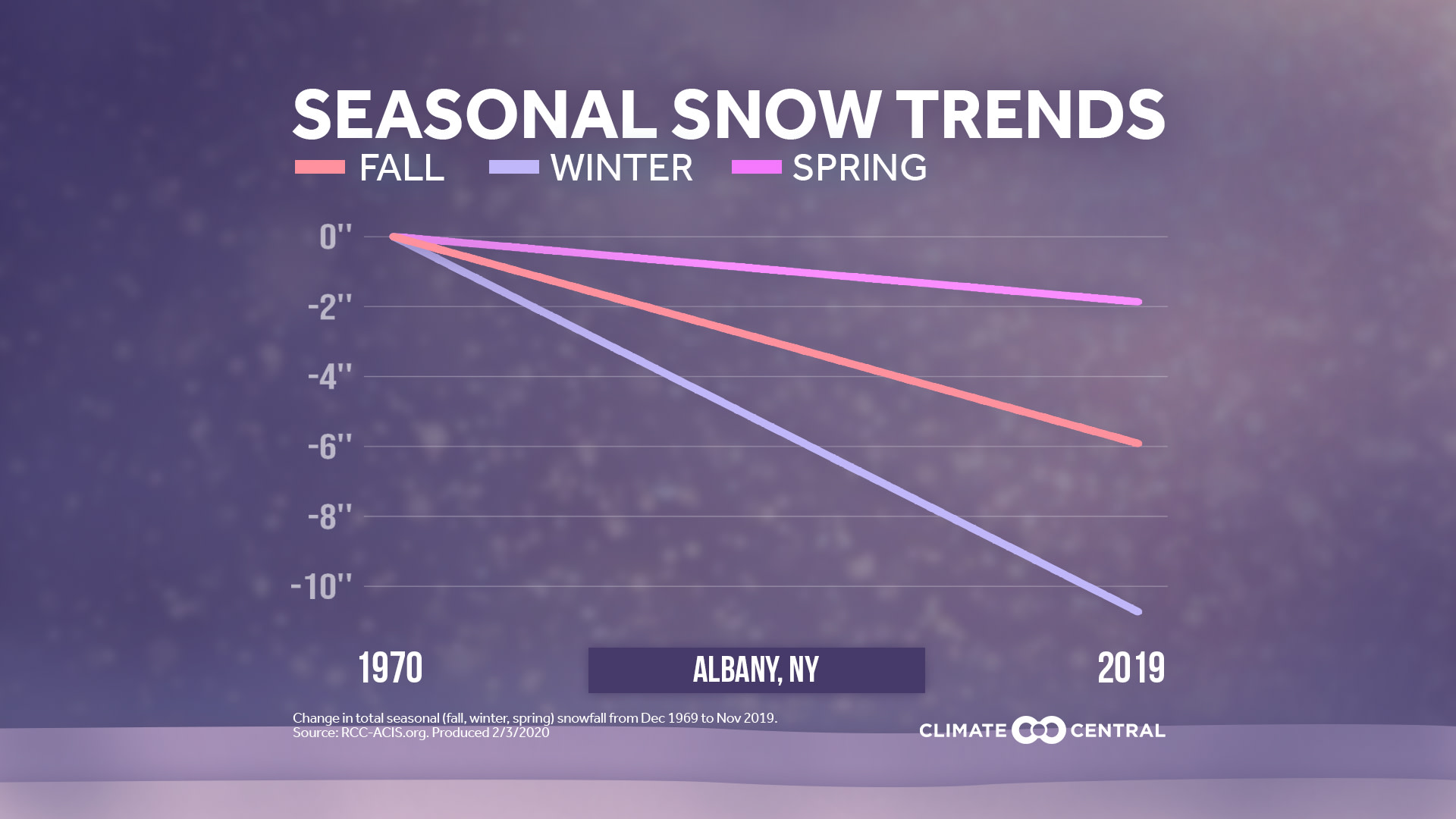View all PNG and JPG versions here
READ THE REPORT
The impact of climate change on snow can be a tricky story to tell. While warming winters would suggest that more precipitation will fall as rain instead of snow, a warming climate is also associated with increased precipitation which, in cold regions, can lead to an increase in snowfall. A new report from Climate Central aims to make sense of this challenging subject—analyzing snowfall data collected between 1970 and 2019 from 145 stations across the country.
Our analysis of long-term snowfall trends finds that snowfall has been decreasing across much of the United States in the spring and fall ("shoulder seasons") Results from 145 locations show that 116 stations (80%) had decreased snowfall before December, and 96 stations (66%) had decreased snowfall after March 1. Winter snow trends however, were a mixed record—with more snow in northern locations and less snow in southern regions of the U.S. Cities showing the greatest change in average annual snowfall were as follows:
Top 5 cities with snow lossesTop 5 cities with snow gainsNashville, Tenn. (59%)Mitchell, S.D. (77%)Knoxville, Tenn. (52%)Atlantic City, N.J. (71%)El Paso, Texas (52%)New York City (66%)Albuquerque/Santa Fe, N.M. (50%)Newark, N.J. (51%)Springfield, Mo. (46%)Marquette, Mich. (45%)
Snow’s not just for pretty pictures—it’s a critical component of our climate system. Snow helps cool the Earth by reflecting sunlight back into the atmosphere (known as its ‘albedo effect’). It is also very important in areas that depend on snowpack as a source of freshwater for drinking supplies, irrigation, and energy production. The Sierra Nevada snowpack alone is estimated to sustain $47 billion in agribusiness annually in California. Agriculture isn’t the only industry that can rely on snow of course—snow recreation (snowboarding, skiing etc.) added an estimated $20.3 billion to the U.S. economy in the 2015-16 winter season alone.
You can find more information about the consequences of warming winters for America’s cold-weather sports economy by reading our earlier report, ‘On Thin Ice: How Climate Change is Shaping Winter Recreation’.
METHODOLOGY: Total annual (July–June) snowfall data from 1970–2019 was obtained for 144 stations from the Applied Climate Information System. Average annual snowfall in the first (1970–1979) and last (2010–2019) decade of the study period was compared for each location. Only stations with at least five inches of average annual snowfall, fewer than 10 percent of missing daily data, and at least five years of data in both the first and last decades of the study period were included in the analysis (criteria based on Kunkel et al. 2009). Seasonal snowfall trends were analyzed from 1970–2019 using linear regression analysis.
